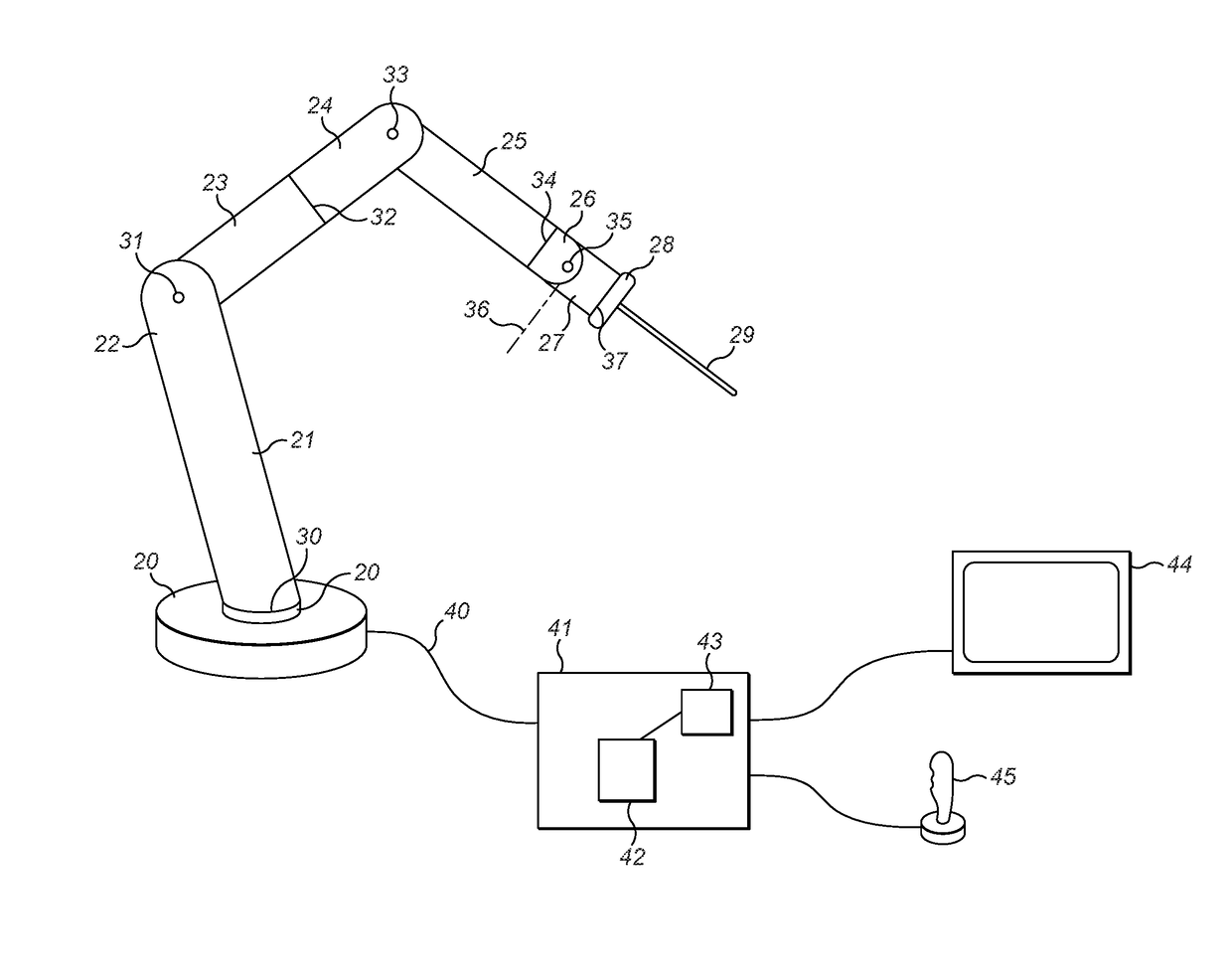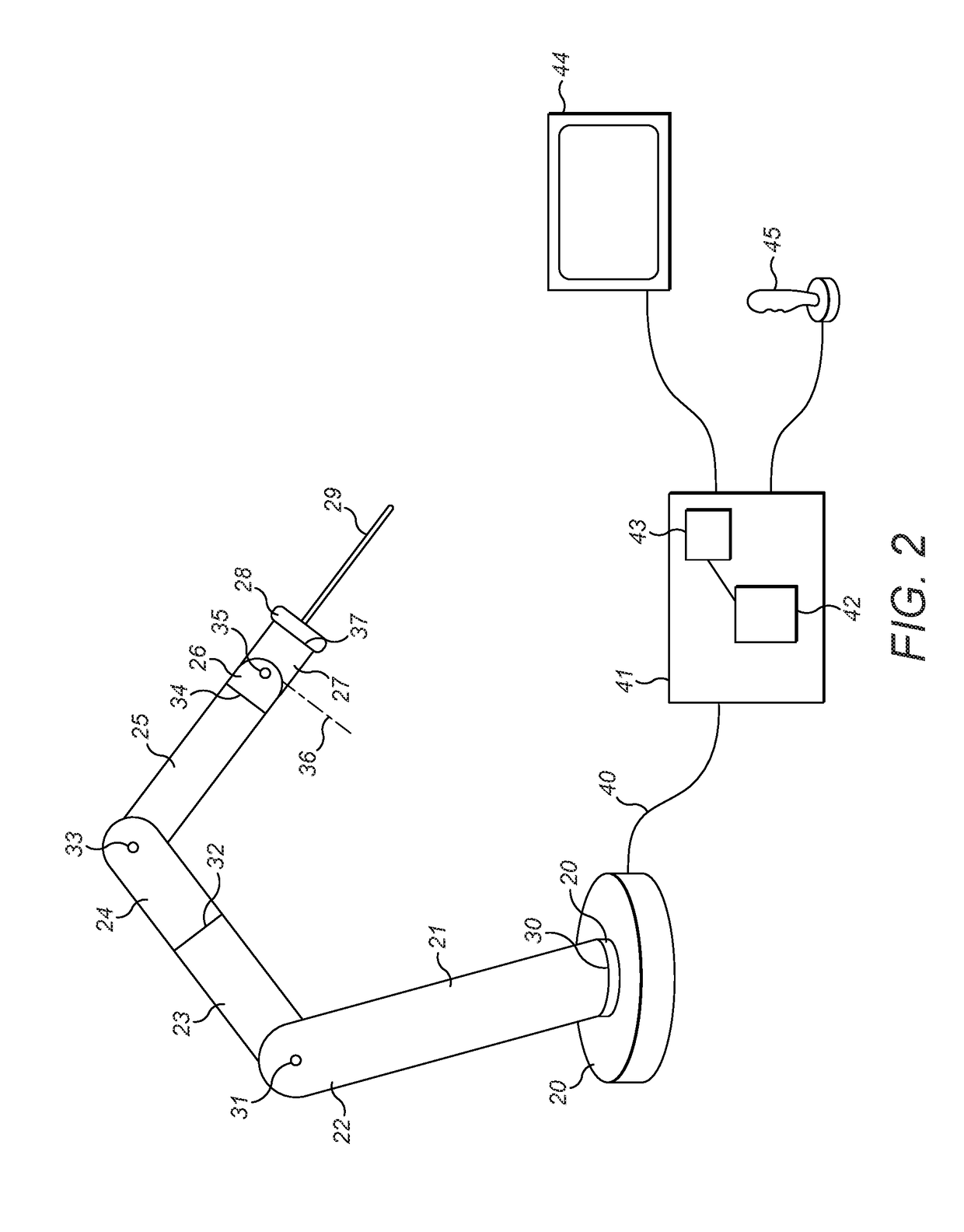Measuring robot performance
a robot and performance measurement technology, applied in the field of measuring robot performance, can solve the problems of unnecessarily disrupting the tissue of a patient, unable to reach the desired position, and overshooting the desired configuration of the arm,
- Summary
- Abstract
- Description
- Claims
- Application Information
AI Technical Summary
Benefits of technology
Problems solved by technology
Method used
Image
Examples
Embodiment Construction
[0018]In the arrangement of FIG. 2 the robot arm includes a series of rigid members 20-28 which are connected in series, with joints 30-37 between successive pairs of members. As an example, members 24, 25 are interconnected by a revolute joint 33. Joint 33 is shown in more detail in FIG. 3. Relative motion of members 24, 25 at the joint 33 can be driven by motor 51 acting through gearbox 53. A torque sensor 59 measures the torque applied at the joint, and a position encoder 60 senses the positional configuration of the joint. A control unit 41 (FIG. 2) receives signals from the torque sensor and the position encoder and generates drive signals to the motor 51. The control system is configured so as to be capable of driving the arm in such a way as to allow it to estimate the mechanical losses between the motor 51 and joint 33. On way in which this can be done is by measuring the actual motion of the arm about the joint when a known power is applied from the motor. If the joint is d...
PUM
 Login to View More
Login to View More Abstract
Description
Claims
Application Information
 Login to View More
Login to View More - R&D
- Intellectual Property
- Life Sciences
- Materials
- Tech Scout
- Unparalleled Data Quality
- Higher Quality Content
- 60% Fewer Hallucinations
Browse by: Latest US Patents, China's latest patents, Technical Efficacy Thesaurus, Application Domain, Technology Topic, Popular Technical Reports.
© 2025 PatSnap. All rights reserved.Legal|Privacy policy|Modern Slavery Act Transparency Statement|Sitemap|About US| Contact US: help@patsnap.com



